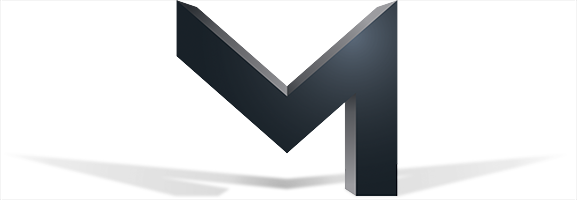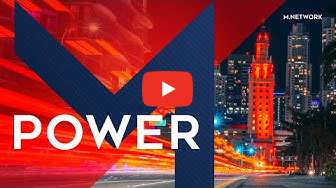That’s the question that everyone seems to be asking following Mark Zuckerberg’s visit to Capitol Hill. The short answer is no; Facebook is not dead. The long answer is that Facebook died years ago. However — like when the newspaper, radio, music, broadcast television and the news industries all died — nobody seemed to notice. Like chickens with their heads cut off, the gushing bodies of those industries seem to just keep running, panic-stricken, around the media barnyard while social media, streaming audio and video services, and the entire Internet stand by and wait for them to bleed out.
Before we light the pyre for Facebook, though, let’s talk about what happened.
From a branding perspective, Facebook died several years ago. Like everything else the Baby Boom generation touches – they killed Facebook off, too. By embracing the platform in droves, Baby Boomers made Facebook insanely profitable AND instantly uncool – Kind of like the enter decade of the 80’s. Let me explain:
Traditional media viewership, listenership and readership have all been in long-term decline. Through the unbridled templatizing of most forms of modern information and entertainment, the Boomers, who have been in charge of traditional media, had long killed off any chance for the survival of those industries, purging all sense of quality, innovation, art and relevance in exchange for hefty profits and soaring stock prices (Remember when GE owned NBC and its stock was trading at $30 a share?)
To nobody’s surprise, pushing all media through some sort of universal plastification unit resulted in lower ratings and readership. That didn’t matter, though, because the lack of an alternative advertising medium meant that the cost of advertising could continue to escalate. This caused many of today’s advertisers to liberally quote John Wanamaker (1838-1922), who is widely credited with saying, “Half the money I spend on advertising is wasted; the trouble is I don’t know which half.”
Hungry for an alternative to traditional media, advertisers sought out a place they could spend their money and get some sort of better, more quantifiable returns. Back at the start of the new millennium, the Internet offered the promise of doing exactly that. With lower costs, hyper targeting, and, above all, verifiable, measurable results, the new, digital frontier appeared to be the promised land.
And thus the trek through the digital desert began; a journey leading to a place where the gold paved streets looked a lot like this:
- The ability to target people who were already interested in the product.
- The ability to talk to people who were ready and willing to spend money on the product.
- The ability to quickly, easily and effectively incentivize customers to tell their friends and family about the product.
- Be able to quantify the direct results of the advertising.
And that brings us to Facebook. Facebook was started as, and has always been, an advertising platform. In 2004, when Facebook was new technology, it was insanely popular with college students, and recent college grads but not too many other people. Even though the platform was only used by a limited audience, advertisers on the platform still had the ability to target people on Facebook by gender, age, geography, political views, relationship status, education and workplace. Not only could advertisers be guaranteed their target, they only paid for the people who actually clicked on the ads (CPC or Cost Per Click). The primary advertisers, at this time, were people advertising their frat parties and/or local businesses located in college towns.
By 2005, though, the CPC model was augmented to include a Cost Per Acquisition (CPA) option. This allowed advertisers to spend money – not only on the people who clicked on their ad – but only on the people who actually made a purchase. It was the equivalent of a guaranteed return on investment (ROI). This is the year that Apple and Victoria’s Secret started advertising on Facebook.
By 2006 Facebook allowed everyone over the age of 13 (with a valid email address) to join Facebook. This brought hundreds of millions of more people to the platform for advertisers to target by gender, age, geography, political views, relationship status, education and workplace.
In 2009 Facebook looked to capitalize on the true power of what it had built. By then, people from all over the world were posting information about themselves to the platform. That information could be distilled and aggregated into a multitude of target audiences and profiles. All of which was then packaged into an easy access digital wrapper and sold to advertisers. All Facebook had to do to leverage all of this data was to get users to give them permission to capture and sell it.
Between 2009 and 2010, Facebook’s privacy changed at least three different times, ultimately allowing the platform to access your pictures, birthday, wall posts, likes, friends, and all of the data in your profile. Additionally, the new platform installed tracking software on your browser, giving Facebook the ability to know every website you visited, what you did on those websites, your online purchasing habits, and to know everything you had ever downloaded to your various devices – whether intentional or unintentional.
In making this information available to advertisers, the floodgate of ad dollars was released – not just to Facebook, but also to other digital platforms that were modeling this strategy (Google, Microsoft, AOL, etc.) or “partnering” with Facebook (Apple, MasterCard, Ford, etc.)
With the influx of ad dollars, large advertisers now had a vested interest in the success of Facebook. They, of course, all launched their own Facebook pages and drove even more of their customers to the platform.
In 2017, digital advertising, through these networks, surpassed TV advertising.
Today, because of this technology, advertisers now have the ability to target and track exactly who they want, when they want and where they want, serving nearly custom built messages designed, measured, and proven to induce a purchase, a vote, a testimonial, or any number of other actions. Native advertising masquerades as content and display ads follow you from site to site. An endless array of quizzes, tests and slide shows populate your newsfeeds and timelines – all to gather more information to help advertisers fine-tune marketing messages and placement to specific, desirable targets.
This is the end of Wanamaker’s long frustration and the dawn of hyper-targeted, data-driven marketing.
Information is power, which is exactly why Mark Zuckerberg was sitting in front of Congress. Power.
Congress would like you to believe that it’s about privacy, but that’s just a ruse. Of all the entities on the planet, few have proven that they don’t actually care about your right to privacy more than the United States government. No. This isn’t about privacy. It’s about the power of marketing. It’s about the power to persuade people to act or not act. It’s about the power to sway an election. And, most of all, it’s about who controls that power.
Joseph Goebbles, Minister of Propaganda for the Third Reich, is reported to have said, “He who runs the information, runs the show.”
(I’m pretty sure that anyone studying psychology and computer science at Harvard would know this quote well.)
And this brings us back to the question posed in the headline of this piece: Is This The End Of Facebook?
The answer depends on what you mean by “end.”
Will this put Facebook out of business? No; at least not for the foreseeable future.
Will this make Facebook irrelevant? Let’s face it. Facebook is irrelevant to a significant demographic (known affectionately as – the future). Facebook started and became successful because it captured a huge chunk of 18-24 year olds. This demo is the demo that drives our culture (and our ad buying). These Millennials are responsible for an estimated $1.3 trillion in spending power and that number is just going to get larger.
In 2018, though, for the first time, fewer than half of all Internet users under the age of 25 will even access Facebook. The demo that started Facebook has now abandoned it.
The decline of younger users on Facebook can be traced directly to the point where the platform expanded its user base, opening the platform up to these people’s parents, grandparents, and younger siblings. This was the equivalent to inviting Mom, Grandpa, and lil’ Sis to the frat party.
To add to this cooling effect, at the same time as the user base was expanding, there was rapid increase in rampant and obvious advertising on the platform.
This made matters worse because, if I may quote the peer reviewed research appearing in the 2016 Marketing Management Journal paper, “Perceptions of Millennial’s Media Attitude:”
“Empirical research has shown that Millennials have overall negative attitudes of advertising, particularly in terms of believability and trustworthiness (Beard, 2003) with the most common attitude of Millennials being cynicism (Bennett & Lachowetz, 2004).”
So to answer the question of whether the whole privacy ordeal and Mark Zuckerberg’s unimpressive performance before Congress will result in a swift and sudden end to Facebook, the reality looks a lot bleaker – kind of like a Solzhenitsyn novel.
To look at Facebook’s current demographic trends, it’s not difficult to imagine a time when the platform, as a whole, becomes digital Siberia — the Internet’s version of Spanish Language AM Radio – a place where old people are invited to spout off about government conspiracies in far away places that most people have long since forgotten about. By then, however, the conspiracy laden, a far away place that other people will have forgotten about will likely be Washington D.C. … Unless, of course, Congress figures out how to contain, regulate, utilize, and defend against all that data Facebook and other networks have been capturing.



